PALEO 200 final
1/119
Earn XP
Description and Tags
Name | Mastery | Learn | Test | Matching | Spaced |
|---|
No study sessions yet.
120 Terms
Carl Linnaeus
18th century Swedish naturalist who created binomial nomenclature
the founding father of modern taxonomy
taxonomy
the science of naming and organizing organisms into related groups
binomial name
the two part scientific name of a species; composed of a genus name and a species epithet; written in italicsspe
genus name
the first half of a binomial name - e.g. Tyranosuarus from tyrannosaurus rex
specific epithet
the second half of a binomial name e.g. rex, from Tyrannosaurus rex
rule of priority
taxonomic law stating once a species has officially been given a binomial name, the cannot be changed
peer-reviewed
the process by which a scientific publication gets reviewed by other scientists to verify that the contents of the publication are legitimate and scientifically reasonable
interspecific variation
when individuals differ in morphology because they belong to different species
intraspecific variation
when individuals differ in morphology, but belong to the same species
sexual dimorphism
differences between males and females of a given species, beyond genitalia
ontogenetic variation
changes that you can see between young individuals and old individuals of the same species
individual variation
normal differences that exists among individuals of a given species. e.g. hair or eye colour
taphonomic variation
when geological processes like plastic deformation change the shape of a bone, resulting in apparent anatomical differences
biological species concept
definition of a species as a group of organisms that can successfully interbreed
population
any grouping of organisms that live in the same geographic area and interbreed
morphological species concept
definition of species as a group of organisms that share a certain degree of physical similarity
lumpers
palaeontologists who require more differences before they consider two species to be distinct
splitters
palaeontologists who require fewer differences before they consider two species to be distinct
Charles Darwin
british naturalist who first conceived the theory of evolution
adaptation
an evolved trait that serves a specific function
heritable trait
a characteristic that is part of an organism’s genetic code and has a chance to be copied to the organism’s offspring
evolution
theory that states that differential success of certain variations of a heritable trait, because of competition for limited resources, leads to the change over time of that trait in a population
natural selection
the competitive selective process by which detrimental traits are competitively discarded and advantageous traits are retained
Dinosauria
a group formed by ornithischians, saurischians, their most recent common ancestor and all of its descendants
Ornithschia
a group formed by all hadrosaurs, ceratopsians, ankylosaurs, and stegosaurs, their most recent common ancestor and all of its descendants
Saurischia
a group formed by the theropods, sauropods and prosauropods, their most recent common ancestor and all of its descendants
character
any heritable trait that can be described and labelled
synapomorphy/shared derived character
a character that is present in two or more groups and their common ancestor, but is not present in any more distantly related groups
convergent evolution
the independent evolution of similar structures in two different lineages, usually due to both lineages facing similar ecological or environmental pressures
principle of superposition
chronological organization of rock layers; the oldest rocks are at the bottom, and the layers become increasingly younger towards the top
stratigraphy
the science of using the arrangement and composition of rock layers to interpret geological history
a formation
a large, uninterrupted sequence of rock that is made of multiple layer that all share similar properties, and that all formed under similar conditions
radiometric dating
the use of isotopic ratios to calculate age of a rock
radioactive isotopes
variations of an element that differ in the number of neutron; has a specific half-life or rate of decay
the geologic time scale
a standardized series of chronological divisions that parses the Earth’s history into discrete named units
stratigraphic column
geologic diagram that illustrates a sequence of rock layers, with the oldest at the bottom and the youngest at the top; often illustrates the thicknesses of each layer
the Cambrian Explosion
dramatic diversification of aquatic animal life that occurred approximately 541 million years ago
trilobites
extinct group of marine arthropods; first evolved during the Cambrian and died out at the End-Permian Mass Extinction
Pterosaurs
group of flying archosaurs closely related to dinosaurs; lived during the Late Triassic to the Cretaceous; the first group of vertebrates to evolve flight
examples: Quetzalcoatlus, Rhamphorhynchus
Plesiosaurs
a group of diapsids specifically adapted to a marine life; lived during the Early Jurassic to Late Cretaceous
examples: Dolichorhynchops, Elasmosaurus, Kronosaurus
Pikaia
though to be one of the oldest known animals with a notochord; lived during the Cambrian
Permo-Triassic Mass Extinction
the single largest mass extinction event in Earth history; occurred 252 million years ago and wiped out an estimated 96% of all marine life and 70% of all terrestrial life
Pangaea
supercontinent, comprised of all the Earth’s major landmasses, that formed around 300 million years ago and began breaking up around 200 million years ago
Mosasaurs
a group of extinct lepidosaurs, related to modern snakes and monitor lizards, that were highly adapted to a marine life; evolved in the Late Cretaceous
ammonite
a kind of extinct marine cephalopod with a spiral shell; thrived from the Devonian through the Cretaceous but died out during the End-Cretaceous Extinction
The Burgess Shale
fossil rich deposit in British Columbia, Canada; famous for its exceptional preservation of 505 million years old marine organisms
isotope ratio
the ratio of a naturally occurring radioactive isotope and its decay products
ichthyosaurs
a group of marine reptiles that first evolved in the Triassic and went extinct towards the end of Cretaceous. they look similar to dolphins, due to convergent evolution of body types. name literally means: “fish lizard”, even though they aren’t fish or lizards
Rhamphorhynchoids
early group of flying reptiles, which were common in the Late Triassic and throughout the Jurassic. typically had long tails compared to later flying reptiles
Pterodactyloids
flying reptiles that differed to early relatives in morphology of their tails, which were short, and the carpels in their wrists, which were elongated and made a greater contribution to the length of the wing. often had large head crests
the crust
the outermost layer of the earth consisting of the continents and ocean basins. between 5 and 25 kilometres deep
Alfred Wegner
founder of the theory of plate tectonics
Mantle
highly viscous layer of the Earth; layer between the crust and the outer core; roughly 2900km thick
Lithosphere
ridged outermost layer of the Earth; composed of the crust and the upper portion of the mantle
Asthenosphere
the viscous layer of the upper mantle below the lithosphere; between roughly 80 and 200 km below the Earth’s surface
inner core
the innermost layer of the Earth; a solid mass composed of iron and nickel
outer core
layer of the Earth composed of molten iron and nickel; roughly 2270 km thick
plates
pieces of the lithosphere affected by convection currents
Panthalassa
the giant ocean that surrounded pangaea
plate tectonics
the movement of the lithosphere that provides the explanation for the drifting continents that Alfred Wegner theorized
Diplodocids
a group of sauropod dinosaurs with long necks and long “whip like” tails; lived during the Middle to Late Jurassic
examples: Apatosaurus, Diplodocus, Supersaurus
Macronarians
group of Jurassic sauropods with robust bodies, front legs not noticeably shorter than their back legs, and that lack whip-tails.
e.g. Brachiosaurus and Giraffatitan
Thyreophorans
group of ornithischians with body armour. includes stegosaurs
niche partitioning
when similar animals avoid direct competition for food resources, by exploiting different ecological niches
e.g. predation vs scavenging
ecological niche
an animal’s role in the ecosystem; how it survives in that ecosystem
allosauroids
large predators that originated in the Jurassic, with vertebrae that interlock more rigidly, so their spines were held stiffer. their legs are proportionately longer, suggesting that they were faster than either megalosaurids or ceratosaurids
e.g. allosaurus
coelurosaurs
group of theropods that originated in the Jurassic, characterized by a long series of sacral vertebrae, narrow hands, and tails with back halves that are skinny, stiff, and lightweight. the group from which birds arise
Laurasia
northern of the two supercontinents that were formed as Pangaea split in the Early Jurassic; comprised Asia, Europe, and North America
Gondwana
Southern of the two supercontinents that were formed as Pangaea split in the Early Jurassic; comprised Australia, Antarctica, Africa, South America, Madagascar and India
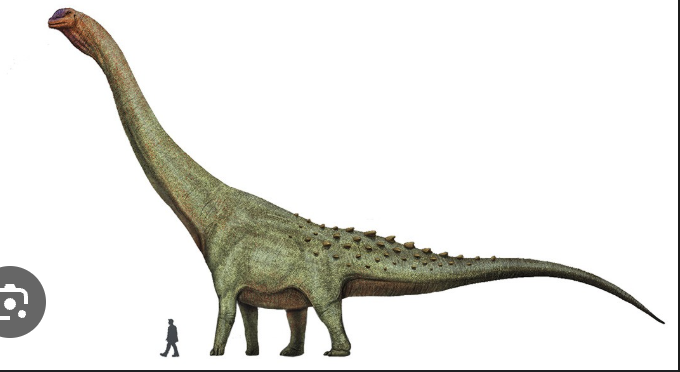
Titanosaurs
group of advanced sauropod dinosaurs; lived during the Late Jurassic to Late Cretaceous; globally distributed but most abundant in Gondwana
examples: Argentinosaurus, Saltosaurus, Alamosaurus
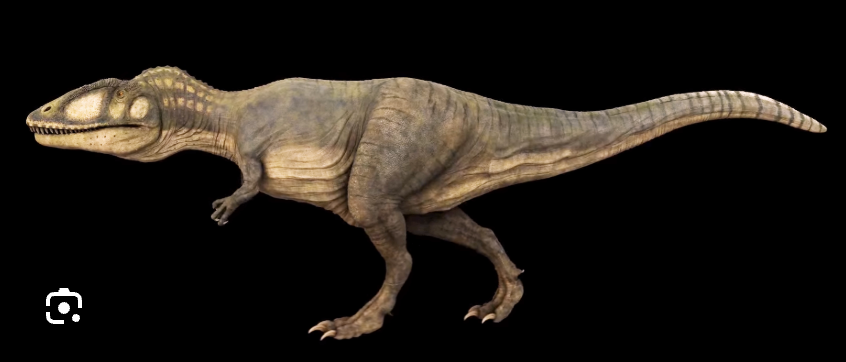
Carcharodontosaurids
a group of theropod dinosaurs with teeth that somewhat resemble those of modern sharks; lived during the Late Jurassic to Late Cretaceous
examples: Giganotosaurus, Carcharodontosaurus, Concavenator

Abelisaurids
a group of ceratosaurid theropods that thrived throughout Gondwana during the Middle Jurassic to Late Cretaceous; characterized by short forelimbs, small teeth, and ornamented skulls
examples: Carnotauris, Majungasaurus, and Rugops
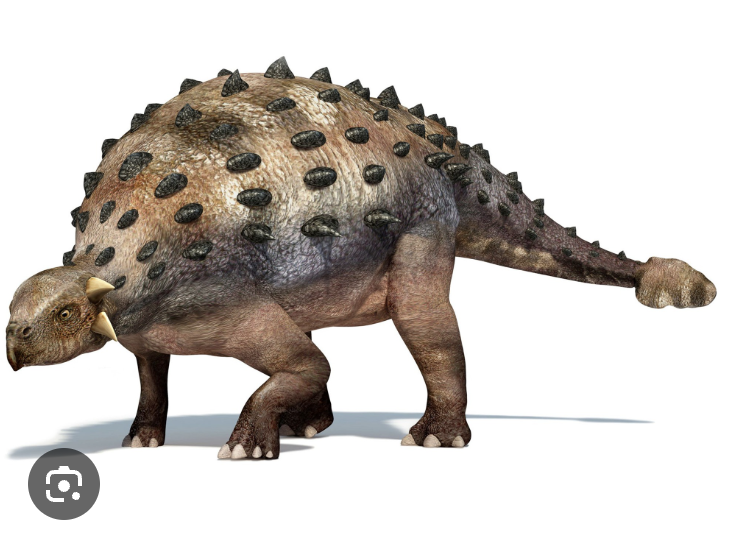
ankylosaurs
heavily-armoured quadrupedal ornithischian dinosaurs
examples: Ankylosaurs, Edmontonia, Polacanthus

Nodosaurids
the second major group of ankylosaurs. they lacked tail clubs, but some have offensive weapons at the other end, in the form of large osteoderm spikes that project outwards from their shoulders
e.g. Borealopelta
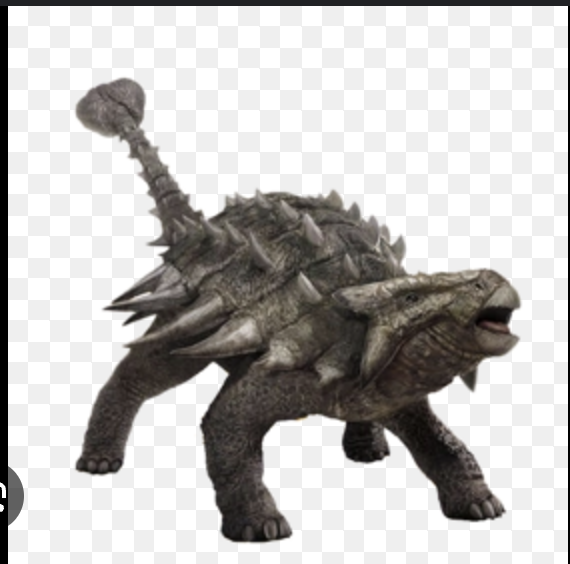
ankylosaurids
the first major group of ankylosaurs. the ankylosaurs with the famous tail clubs; also typically have large backwards-pointing horns at the rear of their skulls and a short rounded snout at the front

Lambeosaurines
advanced group of hadrosaurs with a big crest on their heads. inside this crest is a complex and hollow nasal passageway.
e.g. Parasaurolophus
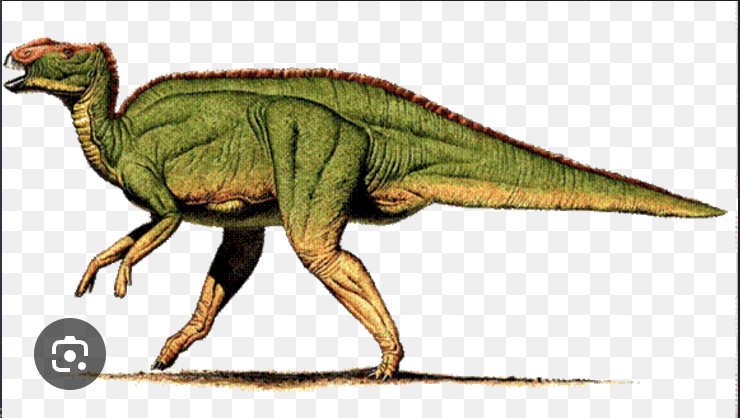
Hadrosaurines
advanced group of hadrosaurs that lacked complex sound amplifying crests. some still did have small bony, or soft tissue crests
e.g. Edmontosaurus
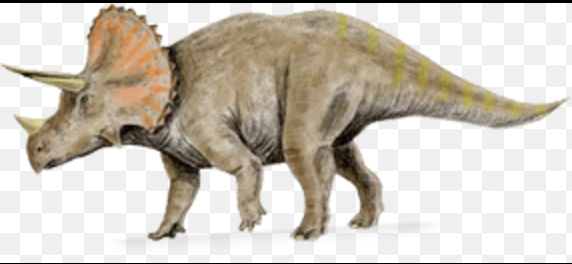
Marginocephalians
diverse group of Laurasian dinosaurs that includes the ceratopsians and pachycephalosaurs. the name literally means “fringe heads” and refers to an overhanging lip of bone at the back margin of the skull
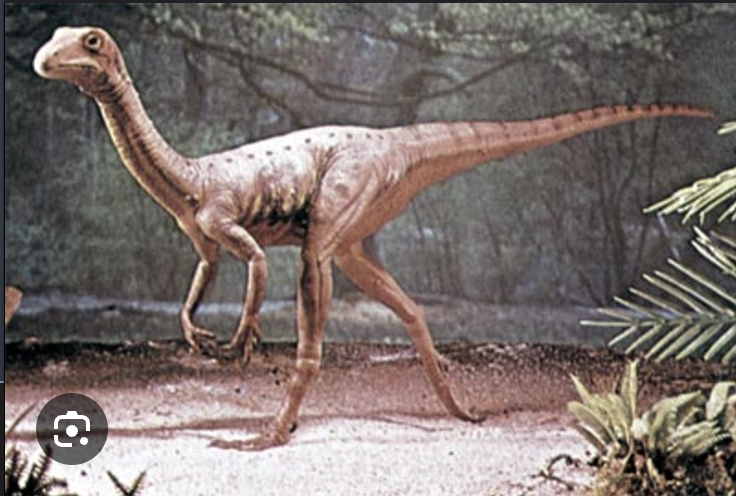
Ornithomimids
group of coelurosaurs that evolved a body plan similar to that of a modern ostrich or emu, but with long clawed forelimbs and large tail
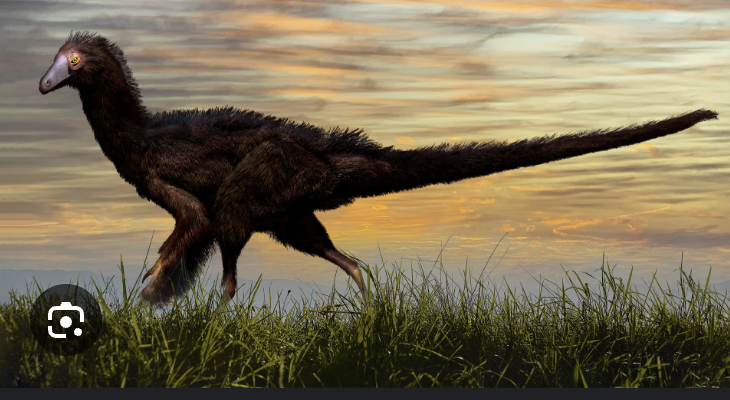
maniraptorans
group of coelurosaurs that developed a highly specialized wrist bone called a semilunate carpal
includes birds, dromaeosaurs and oviraptorosaurs

Dromaeosaurs
group of maniraptorian theropods with a large, sickle-shaped claw on each foot
e.g. deinonychus

oviraptorosaurs
group of maniraptoran theropods that adapted to a mostly vegetarian life and lost their teeth in favour of large beaks. many had cranial crests and fans of feathers on the ends of their tails
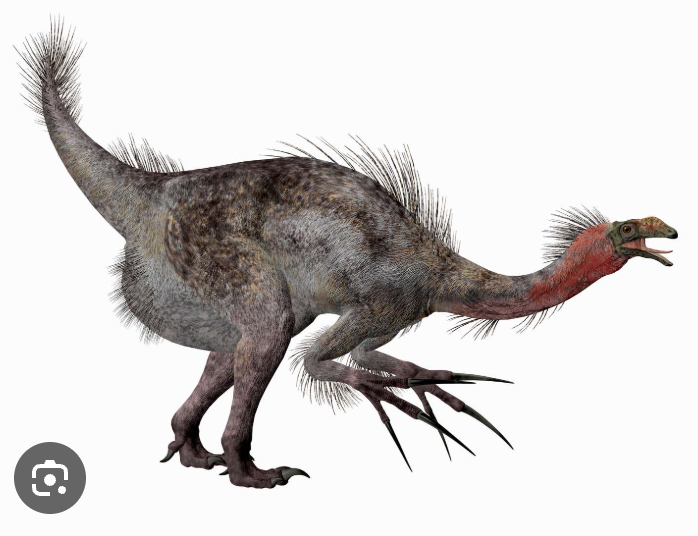
Therizinosaurs
bizarre group of maniraptoran theropods, with large hand claws, small skulls on the end of long necks and hind feet with four forward pointing toes. they also have backwards pubis and jaws with small herbiverous teeth in the back and a beak in the front
faunal interchange
when animals from one region can move into another, leading to similar species in both regions
e.g. Mongolians and W. Canadian dinosaurs
anapsids
a group of amniotes that have no skull fenestrae; turtles are a modern example; note: the validity of this clade is contested among palaeontologists
synapsids
a group of amniotes with only one pair of fenestrae; includes mammals and their extinct close relatives
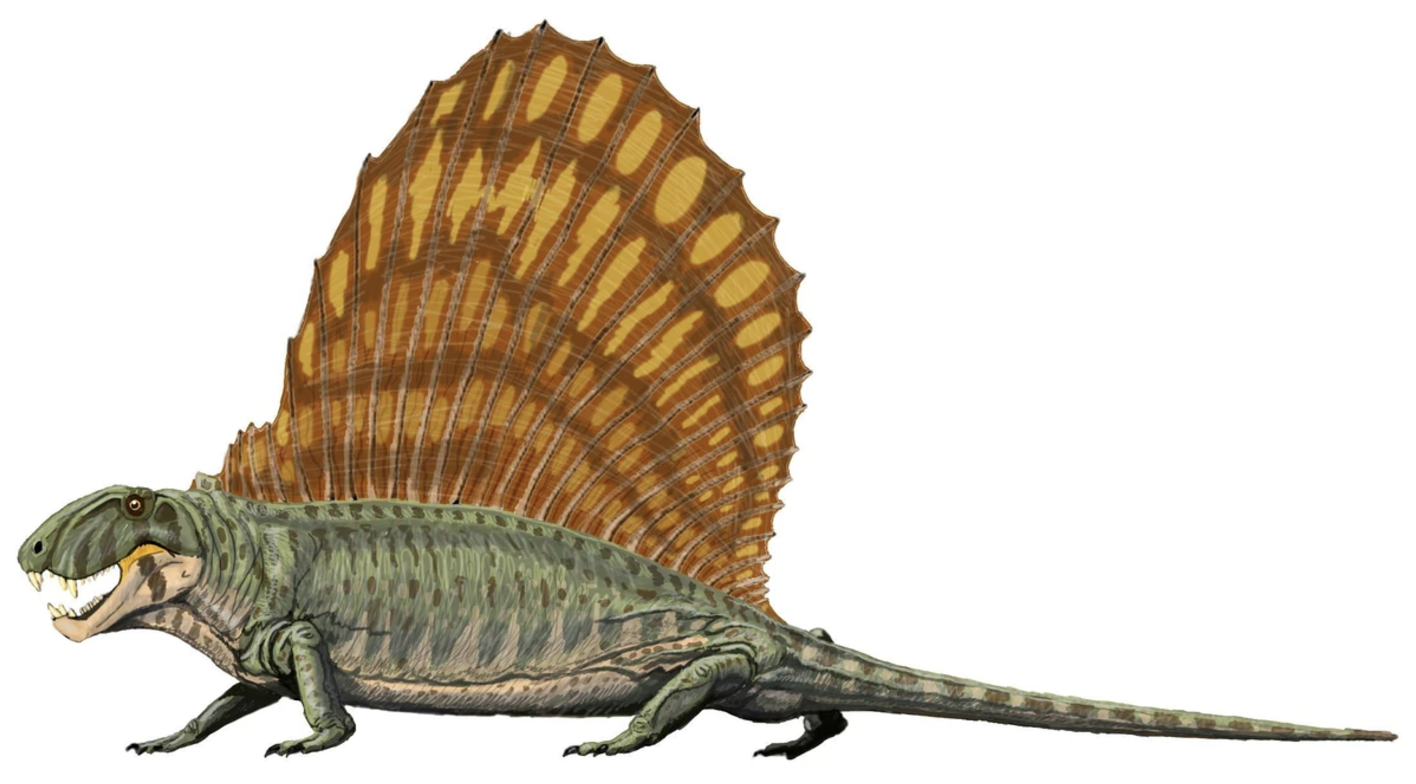
Dimetrodon
famous, sail-backed synapsid that lived during the Permian period. often mistakenly identified as a dinosaur
diapsids
a group of amniotes with two pairs of skull fenestrae: the supratemporal and laterotemporal fenestrae. includes crocodiles, lizards, snakes, tuataras, dinosaurs, birds, and many extinct groups
lepidosauromorphs
group of non-archosaur diapsids that includes lizards, snakes, tuatara, and many extinct groups
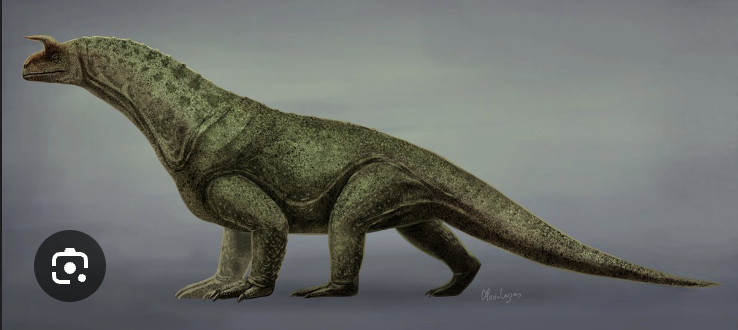
archosauromorphs
a group of diapsids that includes archosaurs and many more primative groups; first evolved during the late Permian
Archosaurs
a group of advanced archosauromorphs diapsids includes crocodiles, dinosaurs, birds, and many extinct groups; characterized by mandibular and antorbital fenestrae
antorbital fenestrae
opening in the skull in front of the orbits; characteristic of archosuars
mandibular fenestra
opening in the lower jaws of archosaurs
avemetatarsalians
special group of archosaurs characterized by ankles that flex like a hinge. includes dinosaurs, pterosaurs and some of their close relatives
pseudosuchians
group of archosaurs that includes modern crocodilians and all archosaurs more closely related to crocodilians than to birds; “crocodile-line” archosaurs. have a peg and socket ankle joint.
gorgonopsids
group of carnivorous synapsids characterized by sets of elongated fangs; lived from the Middle to Late Permian
dicynodonts
a group of herbiverous synapsids with characteristic tusks and beaks; first evolved in permian and thrived during the Triassic
cynodonts
a group of synapsids that led to modern day mammals; first evolved in the Late Permian
what is the length of an eon
length of one billion years, (1,000,000,000 years)
what is the length of an era
several hundred million years, (14 in total)